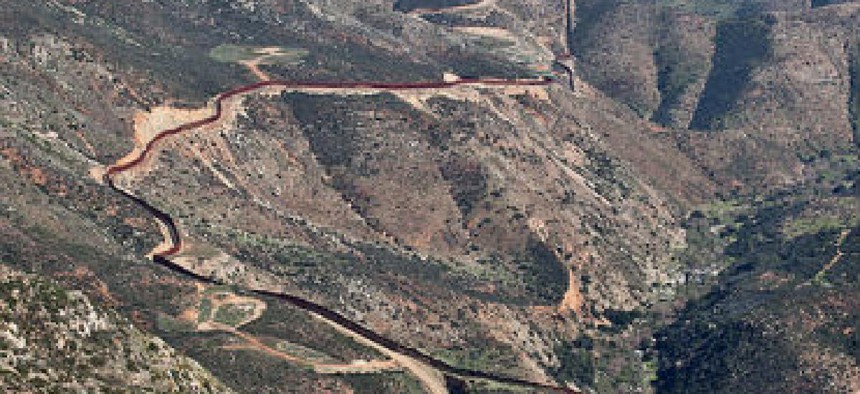Immigration bill has implications for agency IT

Reform bill relies on tech-centric solutions for border control, employment verification

A bipartisan immigration reform bill in the Senate would turn to IT for improvements in employment verification and security along the U.S.-Mexico border. (Photo courtesy of U.S. Customs and Border Patrol)
Technology is at the forefront of an ambitious plan to overhaul the nation's immigration laws. Modernized IT, shared federal spectrum and drone surveillance are all part of a massive legislative package released April 17 by a bipartisan group of eight senators, including rising star Marco Rubio (R-Fla.).
The Border Security, Economic Opportunity and Immigration Modernization Act of 2013, which has been under discussion for months, provides a path to citizenship for undocumented immigrants and a version of the Dream Act that offers legal status to certain young people who were brought to the United States as minors. It also expands immigration opportunities for professionals with backgrounds in science, technology and engineering, and it steps up border enforcement.
The Department of Homeland Security would have to deploy some new technology to support the law's many provisions. Perhaps most ambitious, the legislation calls for the expansion of the E-Verify system into a photo-matching tool connected to a database maintained by U.S. Citizenship and Immigration Services -- a kind of Facebook of documented immigrants. Furthermore, employers would be responsible for ensuring that their workers' identification documents have not been falsified, and the formerly voluntary program would become mandatory in 10 years.
Privacy advocates are concerned about the reach and breadth of the proposed changes. "The merger of E-Verify and state Department of Motor Vehicle information would create a giant photo database of everyone in America," wrote Chris Calabrese, legislative counsel at the American Civil Liberties Union, in a recent blog post. "That database would potentially be available anywhere there is access to the Internet."
Stepping up border enforcement, particularly along the border with Mexico, would include 24-hour drone surveillance under the plan. The Border Patrol would be tasked with deploying video surveillance systems and unmanned aerial vehicles on continuous overflight of the U.S./Mexico border. The legislation specifies that the Border Patrol have trained staff to operate the drones and that the drones be unarmed.
In emergency situations, federal spectrum would be shared with law enforcement in the Southwest so that state, local and tribal agencies could communicate with colleagues at DHS and the Justice and Interior departments. The Justice Department would give grants to state and local law enforcement agencies near the border to acquire multiband digital radios that can operate across jurisdictional lines.
The plan also enlists the military's help in developing better ways to secure the border. The Defense Department's Research and Engineering Enterprise, which oversees the work of the Defense Advanced Research Projects Agency, would be asked to collaborate with DHS to find ways to detect tunnels, locate ultralight aircraft used to circumvent border controls and enhance wide aerial surveillance.
The 844-page bill was introduced in a week in which privacy advocates are focused on their opposition to the cybersecurity legislation the House passed on April 18. Nevertheless, groups active on issues related to surveillance and online privacy are likely to join the ACLU in expressing concern about the expanded E-Verify system and continuous drone overflights of the border region.






